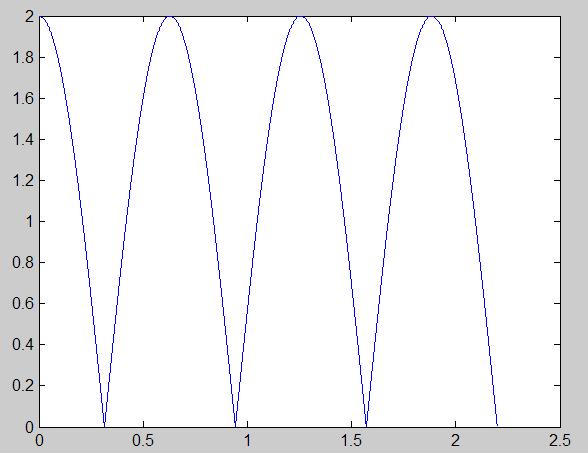(New page: == Periodic Signals and Non-Periodic Signals == Most of the signals from Homework 1 were boring (including mine) so I thought I'd broaden the periodic signal pool. I chose the CT signal:...) |
(→Periodic Signals and Non-Periodic Signals) |
||
| Line 2: | Line 2: | ||
Most of the signals from Homework 1 were boring (including mine) so I thought I'd broaden the periodic signal pool. | Most of the signals from Homework 1 were boring (including mine) so I thought I'd broaden the periodic signal pool. | ||
| − | I chose the CT signal: x(t) = |2*cos(.5*t)| . A graph of this signal in continuous time is shown below. | + | I chose the CT signal: <math>x(t) = |2*cos(.5*t)|</math> . A graph of this signal in continuous time is shown below. |
| − | [[ | + | [[Image:hw2b1_moellerb_ECE301Fall2008mboutin.jpg|300px|frame|center|The continuous-time signal <math>x(t) = |2*cos(.5*t)|</math> is periodic.]] |
Revision as of 10:16, 11 September 2008
Periodic Signals and Non-Periodic Signals
Most of the signals from Homework 1 were boring (including mine) so I thought I'd broaden the periodic signal pool. I chose the CT signal: $ x(t) = |2*cos(.5*t)| $ . A graph of this signal in continuous time is shown below.


